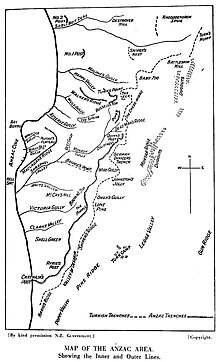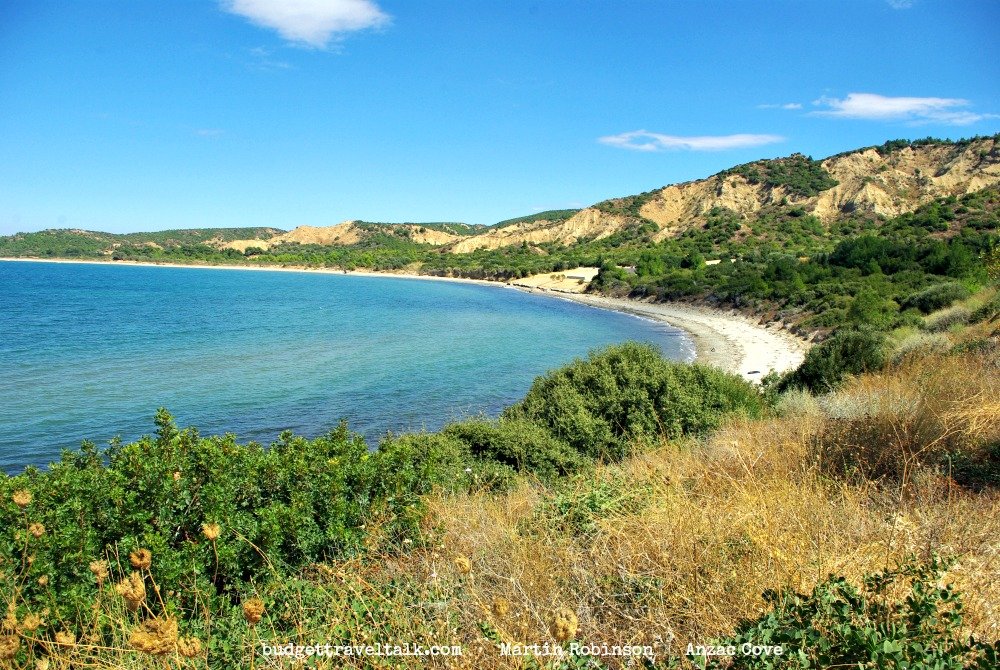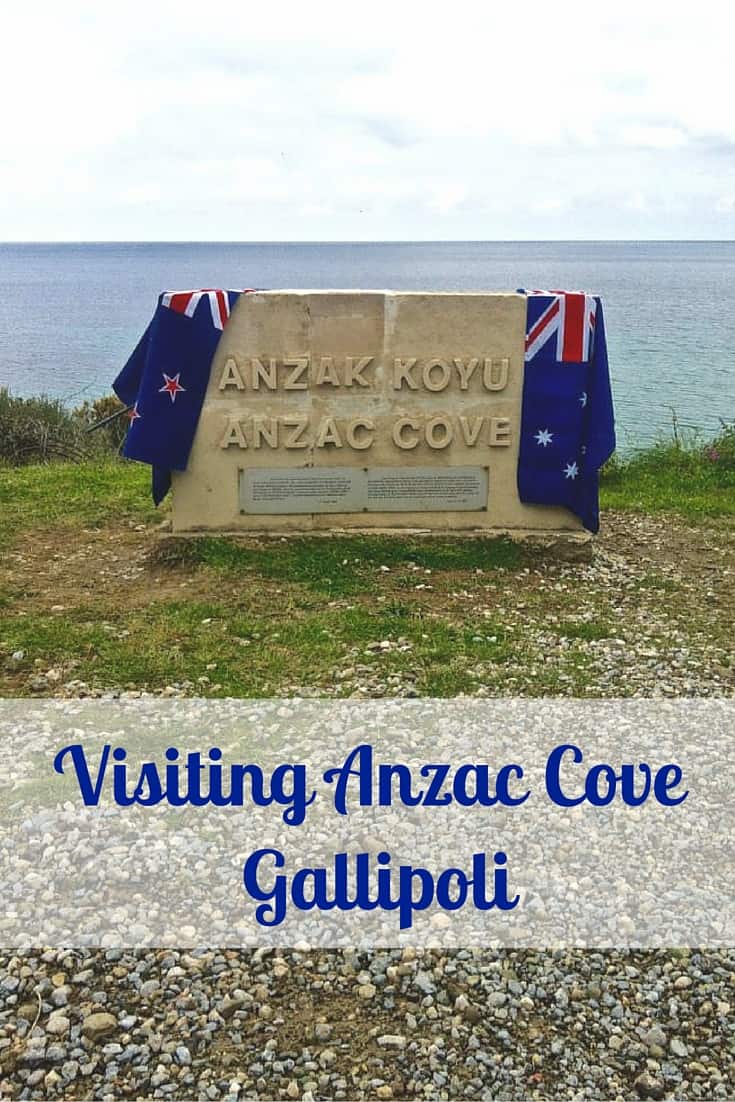ANZAC Cove: Where Legends Landed in Turkey

As you embark on a journey to explore the history of ANZAC Cove, you are about to take a step back in time and discover the significance of one of the most important events that shaped world history. Get ready to experience an incredible tale of bravery, courage, and perseverance of the ANZAC soldiers as they land on the shores of the Gallipoli Peninsula.
The significance of ANZAC Cove in world history
ANZAC Cove holds immense significance in world history, as it marks the site where the Australian and New Zealand Army Corps (ANZAC) landed on April 25th, 1915, during World War I. This event was a pivotal moment in the history of both Australia and New Zealand, marking the first time that the two countries officially participated in a war. The ANZAC soldiers, along with their British and French allies, fought valiantly against the Ottoman Empire in an attempt to open a supply route to Russia. This battle lasted eight long months before the Allies finally withdrew in defeat. Despite the ultimate failure of the campaign, the ANZAC soldiers displayed remarkable courage and determination, and their bravery became a source of pride for Australia and New Zealand.
Overview of the ANZAC landing
The ANZAC landing on April 25th, 1915, was a surprise attack that caught the Ottoman Empire off-guard. However, the ANZAC troops were met with strong resistance from the Ottoman forces, and the landing quickly turned into a brutal battle for control of the Gallipoli Peninsula. The terrain was rugged and inhospitable, with the cliffs of the peninsula rising from the sea. The ANZAC soldiers fought tirelessly for months on end, battling not only the enemy but also the harsh elements and disease.
Despite their hardships, the ANZAC soldiers never gave up, and their spirit and resilience became an inspiration for many people around the world. ANZAC Cove is a tribute to their sacrifices and a reminder of the importance of courage, perseverance, and determination in the face of adversity.

Preparing for the Landing
As you prepare to embark on a journey back in time to the ANZAC Cove, get ready to experience an incredible tale of heroism and bravery that will inspire you.
Allied military strategy
The ANZAC Cove landing was part of a larger military strategy by the Allied forces in World War I. The aim was to open a supply route to Russia by capturing the Gallipoli Peninsula and the Dardanelles, a strategic waterway that provided access to the Black Sea. The plan involved landing troops on the peninsula simultaneously in different locations. The ANZAC Cove landing was one of five landings the Allies intended to make, but it was the only successful one.
The journey to ANZAC Cove
The journey to ANZAC Cove was a perilous one for the ANZAC soldiers. The troops sailed from Egypt on 25th April 1915 and landed at dawn at the cove. They encountered heavy resistance from Ottoman forces fortified in the hills above the landing area. The terrain was rugged, and the soldiers had to fight their way up steep slopes, cliffs, and ravines to make progress.
Although the ANZAC soldiers faced significant obstacles and suffered heavy losses, they never gave up. They continued to fight even in the face of extreme adversity. Their resilience and determination inspired their fellow soldiers and citizens alike. While the campaign ultimately ended in defeat for the Allies, the ANZAC soldiers' bravery and heroism shaped the identity of Australia and New Zealand. They left a legacy that is honoured to this day.
The ANZAC Cove remains a symbol of the incredible spirit of these soldiers, and their story serves as a reminder of the importance of perseverance, bravery, and determination, even in the face of insurmountable challenges.

The Landing
The first wave of ANZAC soldiers
The ANZAC Cove landing was a pivotal moment in the history of Australia and New Zealand. It was part of a larger military strategy by the Allied forces in World War I, designed to open a supply route to Russia by capturing the Gallipoli Peninsula and the Dardanelles. On April 25th, 1915, the first wave of ANZAC soldiers sailed from Egypt towards the cove, landing at dawn. Despite encountering heavy resistance from Ottoman forces, they never gave up.
Challenges and obstacles faced by the ANZAC troops
The terrain was rugged and unforgiving, with steep slopes, cliffs and ravines proving a difficult barrier. Despite this, ANZAC soldiers pressed on, facing significant obstacles and heavy losses but never giving up. Their resilience and determination remain an inspiration to us all today.
The bravery and heroism of these soldiers continue to shape the identity of Australia and New Zealand, leaving a legacy that is honoured to this day. Although the campaign ultimately ended in defeat for the Allies, the spirit of the ANZAC soldiers and their story reminded them of the importance of perseverance, bravery, and determination, even in the face of insurmountable challenges.
ANZAC Cove will forever remain a symbol of the incredible spirit of these soldiers and a testament to the power of the human spirit. It is a pilgrimage every Australian and New Zealander should undertake at least once in their lifetime to honour those whose courage in the face of adversity remains an inspiration for future generations.

The Battle of ANZAC Cove
Allies’ plan of attack and resistance encountered
The Allied forces formulated an intricate military strategy to capture the Gallipoli Peninsula and the Dardanelles to open a supply route to Russia. On April 25th, 1915, the initial wave of ANZAC soldiers sailed from Egypt towards the cove, landing at dawn. Despite encountering heavy resistance from Turkish forces, they didn't give up. The terrain was rugged and unforgiving, with steep slopes, cliffs, and ravines that proved to be a challenging barrier to overcome.
Daily life and trench warfare
The ANZAC soldiers had to endure several challenges during their time at Gallipoli. They had to construct emplacements, shelters, and trenches while under constant gunfire. The daily life of an ANZAC soldier included hours of monotonous duties in a hostile environment with limited fresh water, rations, and medical facilities. Yet, they persisted with resilience and determination.
The bravery and heroism of these soldiers continue to shape the identity of Australia and New Zealand, inspiring generations to come. Although the campaign ultimately ended in defeat for the Allies, the spirit of the ANZAC soldiers remains a testament to the importance of perseverance, bravery, and determination, even in the face of insurmountable challenges.
ANZAC Cove remains a symbol of the incredible spirit of these soldiers and a testament to the power of the human spirit. Every Australian and New Zealander should undertake this pilgrimage at least once in their lifetime to pay tribute to the ANZAC soldiers, who showed us what it means to be brave and dedicated.
The Aftermath
As you reflect upon your journey to ANZAC Cove, you might wonder about the battle's aftermath and its lasting impact on Australia and New Zealand. Despite the Allies' defeat, the courage and resilience displayed by the ANZAC soldiers during the campaign left a profound legacy that continues to inspire us today.
The cost of the battle
The battle at ANZAC Cove was one of the bloodiest and costliest battles of World War I. The ANZAC soldiers faced fierce resistance from the Turkish forces, resulting in heavy casualties on both sides. The Allied forces suffered over 26,000 casualties during the eight-month campaign, with around 8,700 ANZAC soldiers losing their lives.
The loss of so many brave soldiers was a great tragedy for their families and communities, and it left an indelible mark on the social fabric of both Australia and New Zealand. Nevertheless, the ANZAC soldiers' sacrifice is remembered with pride and gratitude, as it demonstrated the values of courage, loyalty, and sacrifice that are so dear to our nation's hearts.
The legacy of ANZAC Cove
The legacy of ANZAC Cove extends far beyond the battlefield. The courage and determination displayed by the ANZAC soldiers during the campaign continue to inspire us today as a testament to the human spirit's strength and resilience.
ANZAC Day is celebrated annually on 25th April to honour the ANZAC soldiers who served and sacrificed their lives for their country. The day is a reminder of the importance of courage, loyalty, and dedication to one's country and serves as a celebration of the best human spirit.
The legacy of ANZAC Cove is a symbol of the ANZAC soldiers' incredible spirit and a testament to the power of the human heart. It reminds us that, even in the darkest times, we can find hope and courage in adversity.
As you conclude your journey to ANZAC Cove, you can be proud to be a part of a nation that values courage, loyalty, and sacrifice. The ANZAC soldiers' legacy is a tribute to these values and a beacon of hope for future generations.

Monuments and Memorials
As you reflect upon your journey to ANZAC Cove, you can't help but notice the numerous monuments and memorials scattered throughout the area. These monuments serve as reminders of the incredible sacrifices made by the ANZAC soldiers during World War I and stand as symbols of hope and resilience.
ANZAC Cove Memorials and the Gallipoli Peninsula
The ANZAC Cove area is home to several memorials dedicated to the soldiers who lost their lives during the campaign. The ANZAC Commemorative Site at North Beach houses numerous plaques and memorials honouring the ANZAC soldiers' bravery and sacrifice.
The Lone Pine Cemetery and Memorial, located on the southern slopes of Plateau 400, is another significant memorial site. It is the final resting place of over 4,900 Commonwealth service members, including over 1,200 ANZAC soldiers.
The Gallipoli Peninsula also houses numerous memorials dedicated to the ANZAC soldiers. The Chunuk Bair Memorial, located on the summit of Chunuk Bair, commemorates the ANZAC soldiers who fought and died during the August Offensive.
Significance of monuments and memorials in ANZAC Cove
The monuments and memorials in ANZAC Cove serve several important purposes. Firstly, they serve as tangible reminders of the incredible sacrifices made by the ANZAC soldiers during the campaign. The memorials ensure that the soldier's bravery and sacrifice are never forgotten and remain fresh for generations.
Secondly, the monuments and memorials in ANZAC Cove serve as symbols of hope and resilience. Despite the tragic losses suffered during the campaign, the ANZAC soldiers' spirit and determination remained unbroken. The monuments remind us that, even in the darkest times, we can find hope and strength in adversity.
As you leave ANZAC Cove, take a moment to reflect on the significance of the area's monuments and memorials. They stand as a tribute to the incredible spirit and resilience of the ANZAC soldiers and serve as symbols of hope and courage for generations to come.

ANZAC Cove Today
The contemporary context of ANZAC Cove
Today, ANZAC Cove serves as a place of pilgrimage for Australians and New Zealanders who come to pay their respects to the fallen soldiers. The area has also witnessed many commemorative events attended by dignitaries from both countries. ANZAC Day, celebrated on the 25th of April every year, is a remembrance day marked with solemn ceremonies and services.
Recently, ANZAC Cove has also become a site of reconciliation between Australia, New Zealand, and Turkey. The Turkish authorities have taken steps to acknowledge the sacrifices of the ANZAC soldiers and have welcomed visitors from Australia and New Zealand to visit the site. Furthermore, in 2015, the 100th anniversary of the Gallipoli Campaign was marked with a commemoration ceremony attended by dignitaries from both nations.
Meaning and commemoration practices within Australia and Turkey
The meaning and commemoration practices associated with ANZAC Cove have evolved. In Australia, ANZAC Day is observed with a dawn service and other commemorative events honouring the soldiers who fought at Gallipoli. In contrast, in Turkey, the anniversary of the Gallipoli Campaign is known as Canakkale Victory Day, commemorating the Turkish soldiers who fought and defended their homeland.
Despite these differences, both nations acknowledge the importance of ANZAC Cove in their shared history. Today, the area stands as a testament to the strength and resilience of the ANZAC soldiers. The monuments and memorials remind them of the values they fought for, including courage, mateship, and sacrifice.
As you leave ANZAC Cove, take with you the memories and the spirit of the place. Remember the ANZAC soldiers' bravery, sacrifice, and legacy. We should cherish the values that they stood for and strive to emulate them in our lives.

ANZAC Tourism
As you embark on your journey to ANZAC Cove, you are filled with anticipation and excitement. The trip not only promises a chance to explore a beautiful landscape but also offers an opportunity to pay homage to the brave soldiers who fought and died in the name of freedom and democracy.
ANZAC tourism initiation and its role in ANZAC remembrance
ANZAC tourism is a relatively recent phenomenon that has gained immense popularity in Australia and New Zealand. The trend began in the 1990s when Australians and New Zealanders became increasingly interested in visiting the historic site. The tourism industry quickly realised the potential for the Gallipoli Campaign to become a major visitor attraction and began organising tours and excursions to ANZAC Cove.
ANZAC tourism plays a crucial role in keeping the memory of the soldiers alive. By visiting ANZAC Cove, travellers can connect with the history and empathise with the soldiers' experiences. ANZAC tourism also contributes to the local economy and provides employment opportunities to the region's people.
ANZAC Cove Guides and tour operators
ANZAC Cove guides and tour operators are essential to the ANZAC tourism experience. They help visitors understand the area's significance more by providing historical information and contextualising the events. Most guides are locals who have grown up in the area and have developed a deep appreciation for the ANZAC legacy. Tour operators offer a range of tours, from basic walking tours to more comprehensive packages that include accommodation and transport.
Overall, ANZAC tourism offers a unique opportunity to honour the soldiers who fought in the Gallipoli Campaign and to connect with the values that they stood for. The area's monuments and memorials remind us of the ANZAC soldiers' courage, mateship, and sacrifice and inspire us to cultivate these values in our own lives. By supporting the ANZAC tourism industry, we are preserving the past and contributing to the development of the region and its people.
